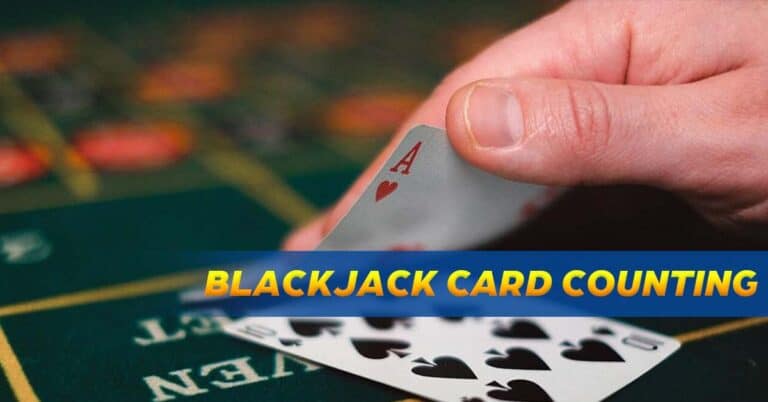How to Play Baccarat: A Beginner’s Guide to the Classic Card Game
Baccarat, a timeless and elegant card game, has been captivating players for generations with its simplicity and intrigue. Learning how to play Baccarat is a worthwhile endeavor. In this comprehensive guide, we’ll walk you through the rules, strategies, and etiquette of Baccarat, ensuring you’re well-prepared to step into the world of this captivating game.

Basics of How to Play Baccarat
In the world of Baccarat, understanding its basics is key to enjoying and succeeding in the game. You’ll discover that the core objective revolves around a classic Player versus Banker showdown. As a player, your aim is to predict which hand – either the Player’s or the Banker’s – will have a total closest to 9.
To determine the hand total, card values play a pivotal role. In Baccarat, cards from 2 to 9 retain their face value, while 10s and face cards carry no value (they are counted as 0). Aces are considered as 1 point. To calculate the hand total, the values of individual cards are summed up, and if the sum exceeds 9, only the last digit of the sum is considered. For instance, if the total is 15, it’s counted as 5.

Dealing and drawing rules further define the dynamics of the game. Both the Player and Banker are initially dealt two cards. In some cases, if either the Player or Banker has a total of 8 or 9 with the first two cards, it’s a natural win, and no additional cards are drawn. If not, a set of rules dictate whether a third card is drawn for the Player and/or the Banker based on their respective totals. These rules are standardized and followed across all games, ensuring fairness and consistency in gameplay.
Types of Bets in Baccarat
a variety of bets await, each with its unique characteristics and potential outcomes. Let’s explore the three primary types of bets: Player Bet, Banker Bet, and Tie Bet.

1. Player Bet Explained:
Placing a Player Bet is essentially wagering on the Player’s hand to win. If the Player’s hand has a total closer to 9 than the Banker’s hand, you emerge victorious. This bet is straightforward and pays 1:1, meaning you receive an equal amount to your wager if you win. While it might seem like the safer option, it’s important to remember that both the Player and Banker bets have their own odds and strategic considerations.
2. Banker Bet Explained:
Opting for a Banker Bet means you’re betting on the Banker’s hand to be the winner. While the payout for a Banker Bet is also 1:1, there’s a slight catch: a 5% commission is usually charged on winning Banker bets. This is due to the statistical advantage that the Banker bet carries, making it a slightly more favorable choice in the long run. It’s worth noting that some players prefer this bet for its strategic edge.
3. Tie Bet: Pros and Cons:
The Tie Bet is a bit different. Here, you’re wagering that both the Player’s and Banker’s hands will end up with an equal total – a tie. While the payout for a successful Tie Bet is significantly higher, often around 8:1 or 9:1, this bet is known for its challenging odds. Ties are relatively rare in Baccarat, making this bet more of a high-risk, high-reward proposition. Many experienced players advise caution with Tie Bets due to their infrequent occurrence.
Playing the Game
When you’re ready to dive into a Baccarat game, knowing how to play each round, employing informed betting strategies, and understanding popular betting systems can significantly enhance your experience. Let’s explore these aspects step by step:

1. Steps of a Baccarat Round:
A Baccarat round is a structured sequence that involves several key steps. Players place their bets on either the Player, Banker, or Tie before cards are dealt. Following the placement of wagers, the dealer deals two cards to each of the Player’s and Banker’s hands. Depending on the hand totals, a third card might be drawn for the Player and/or Banker following specific rules. The hand with a total closest to 9 wins and payouts are distributed accordingly.
2. Strategies for Making Informed Bets:
Baccarat is not solely a game of chance; strategic betting can significantly impact your outcomes. By observing patterns and trends and understanding odds, you can make more informed bets. Analyze previous rounds to identify streaks and trends, but remember that each hand is independent of the previous one. Patience and calculated risk-taking are key elements in forming a successful betting strategy.
3. The Martingale Strategy:
The Martingale Strategy is a well-known betting strategy in Baccarat and other casino games. Following each loss, you double your wager, and following a win, you return to your initial bet. The goal is to recoup previous losses with a single win. While it can work in theory, it requires a substantial bankroll and carries the risk of hitting table limits or experiencing a long losing streak.
4. The Fibonacci Strategy:
Inspired by the famous Fibonacci sequence, this strategy involves placing bets based on the sum of the previous two bets. If you lose, you move one step forward in the sequence; if you win, you move two steps back. This approach aims to minimize losses during a losing streak while capitalizing on a winning streak. However, similar to Martingale, it requires careful bankroll management.
5. The Paroli System:
Unlike the previous strategies, the Paroli System is considered a positive progression system. When you win a bet, you double your wager for the next round. The idea is to ride winning streaks while reducing your bet back to the initial amount after three consecutive wins or any loss. This strategy aims to capitalize on hot streaks while minimizing losses during cold streaks.
By adopting these methods into your games, you’ll be armed with the knowledge to make better judgments and potentially boost your chances of success. Remember that no strategy guarantees a win, and responsible gambling practices should always be observed.
Understanding Odds and Payouts
Understanding the odds and payouts in Baccarat is pivotal to making informed bets and maximizing your potential winnings. Let’s delve into the details of odds and payouts for the three primary bet types – Player, Banker, and Tie – as well as how to calculate payouts and the concept of the house edge:

Odds for Player, Banker, and Tie Bets:
Each type of bet in Baccarat comes with its unique odds. The Player and Banker bets offer similar odds, but due to the Banker bet’s commission, the actual payouts differ. The Player bet generally has even odds, meaning a successful bet pays 1:1. The Banker bet, while also paying 1:1, often involves a 5% commission on winnings due to its statistical advantage. The Tie bet, with its higher payout, can range from around 8:1 to 9:1, but it comes with significantly lower odds of occurring.
Calculating Payouts and House Edge:
Calculating payouts in Baccarat is relatively straightforward. For Player and Banker bets, a winning bet of $100 will yield a payout of $100 plus your initial bet. However, with the Banker bet’s commission, your payout on a successful Banker bet will be slightly less.
The concept of the house edge is crucial in understanding your potential profitability. The house edge represents the casino’s statistical advantage over players. In Baccarat, the Banker bet offers the lowest house edge, usually around 1.06%, making it more favorable for players in the long run. The Player bet carries a slightly higher house edge of around 1.24%, while the Tie bet, despite its appealing payout, comes with a much higher house edge, often exceeding 14%. Understanding the house edge helps you make strategic decisions and manage your expectations regarding potential losses and gains.
By grasping the odds, payouts, and house edge associated with different bets, you’ll be better equipped to tailor your betting strategy to your preferences and risk tolerance.
Etiquette and Rules at Baccarat Tables
When stepping into the world of Baccarat online, it’s not only about the cards and bets – proper etiquette and rules at the tables play a significant role in creating a respectful and enjoyable gaming environment. Let’s explore the important aspects of behavior at the table and effectively communicating with dealers through hand gestures:

1. Behavior at the Table:
Respect and courtesy are fundamental at any casino table, including Baccarat. Follow these etiquette guidelines:
Stay Calm: Maintain composure regardless of the outcomes. Avoid excessive celebrations or frustrations.
Silence Devices: Keep your phone and other devices on silent mode to avoid disrupting fellow players.
Wait Your Turn: Follow the order of play and allow others to act before you.
No Mid-Game Entry or Exit: Join or leave the table during breaks between rounds to avoid disruption.
Chips and Bets: Handle your chips neatly and place bets promptly within the dealer’s time frame.
Tipping: While not mandatory, tipping the dealer for exceptional service is appreciated.
2. Hand Gestures and Communicating with Dealers:
In Baccarat, communication between players and dealers often relies on nonverbal cues. Here are common hand gestures and tips for effective interaction:
Placing Bets: Place your chips neatly within the designated betting areas to signal your bet.
Adding to Bets: If you wish to increase your wager, carefully stack additional chips next to your original bet.
Removing Bets: To retract a bet, politely signal the dealer to clear your chips.
Stay Behind the Line: When interacting with the dealer, refrain from reaching across the table or interfering with other players’ bets.
Stay in the Game: Keep your hands visible on the table at all times to ensure fair play.
Nonverbal Communication: If you need additional cards during a round, gently scratch the table with your cards. To decline a card, slide your cards under your bet.
Common Mistakes to Avoid
Avoiding common mistakes is essential for a successful Baccarat experience. Let’s delve into two significant pitfalls – chasing losses and ignoring the house commission – that players should steer clear of:

1. Chasing Losses: A Recipe for Disaster
Chasing losses is a major gambling blunder, including Baccarat. This happens when players become emotionally pushed by losses and wager more impulsively. Chasers generally make bad decisions, lose more, and get frustrated. Instead, stay calm and sensible. Set a budget before playing and stick to it regardless of results. Baccarat is unpredictable, and pursuing losses increases the risk.
2. Ignoring the House Commission
Ignoring the house commission in Baccarat’s Banker bet might reduce winnings. Despite its reduced house edge, the Banker bet often has a 5% commission. Neglecting this commission can cause net winning calculations to be off. Consider the commission while assessing Banker Bet’s long-term profitability. The commission may seem small, but it’s crucial to optimizing profits.
FAQs
Conclusion
Baccarat is a great choice for players of all levels because it is simple, elegant, and gives you options for how to play. Whether you like it for the low house edge, the high stakes, or the strategic parts, Baccarat is a fun and engaging online casino game.















